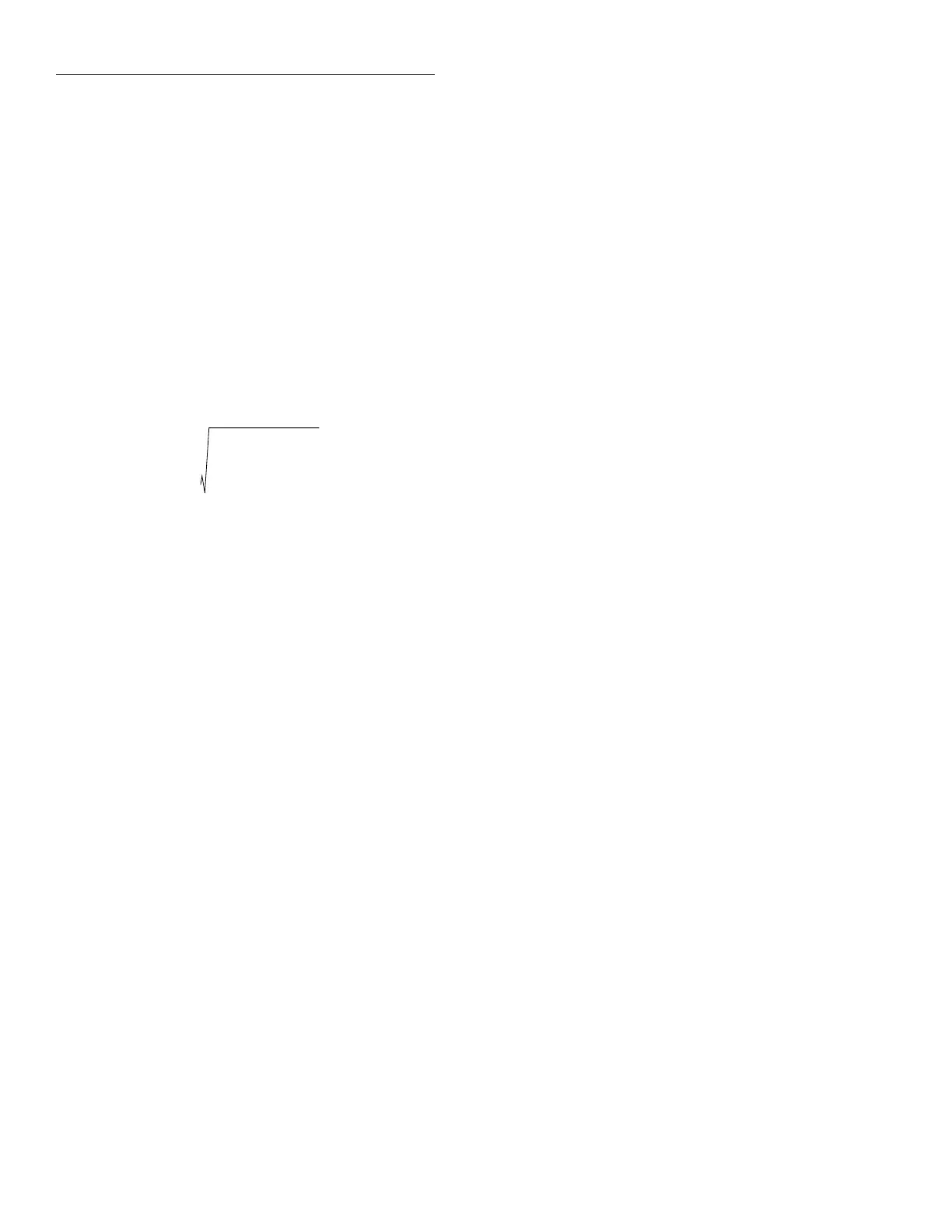Front Panel Operation
3-86
The equation used to calculate the mean is:
where: x
i
is a stored reading, and
n is the number of stored readings.
Note: If n = 0, the result is NAN (not a number).
4. SDEV This operation displays the standard deviation
of the stored readings, for example:
SDEV=1.4944e-03
The equation used to calculate the standard deviation is:
where: x
i
is a stored reading, and
n is the number of stored readings.
Note: If n ≤ 1, the result is NAN (not a number).
NOTE
These statistics are invalid if the measure-
ment function changed during data store
(e.g., when scanning different functions).
NOTE
The Model 2001 uses IEEE-754 floating
point format for math calculations.
The last display in this series allows you to dump the buff-
ered readings to a printer. See paragraph 3.12.2 for details on
configuring printers.
3.9 Filters
Filtering stabilizes noisy measurements. The Model 2001
uses a digital filter and an analog filter.
The digital filter is based on reading conversions. The dis-
played, stored or transmitted reading is simply an average of
a number of reading conversions. When the digital filter is
enabled, the selected digital filter configuration for that mea-
y
X
i
i 1=
n
∑
n
---------------=
X
i
2
-
1
n
---
X
i
i=1
n
∑
2
i=1
n
∑
n-1
-----------------------------------------------
y
=
surement function is in effect. Digital filtering is performed
only on primary display measurements; it has no effect on
multiple displays. Paragraphs 3.9.1 through 3.9.6 explain
how to configure and control the digital filter.
The analog filter is simply an RC network for the DCV func-
tion that filters out high frequency noise (>10kHz) seen at the
input of the instrument. Detailed information on using the
analog filter is contained in paragraph 3.9.7.
3.9.1 Digital filter types
The Model 2001 has two types of digital filters: averaging
and advanced. Both types are a simple average of one to 100
reading conversions. The difference between them is the
user-programmable noise “window” of the advanced filter.
The noise window, which is expressed as a percentage of
range (0-100%), allows a faster response time to large signal
step changes (e.g., scanned readings). A reading conversion
outside the plus or minus noise window fills the filter “stack”
immediately.
If the noise does not exceed the selected percentage of range,
the reading is based on an average of reading conversions. In
this case, the advanced filter works the same as the averaging
filter. If the noise does exceed the selected percentage, the
reading is a single reading conversion, and new averaging
starts from this point. The two filter types are compared in
Figure 3-40A.
3.9.2 Digital filter modes
An additional filter parameter is the mode, either moving or
repeating. A moving filter is a first-in, first-out stack, where
the newest reading conversion replaces the oldest. An aver-
age of the stacked reading conversions yields a reading.
Therefore, after a selected number of conversions, a moving
filter gives a new reading for every new conversion.
A repeating filter takes a selected number of reading conver-
sions, averages them, and yields a reading. It then flushes its
stack and starts over. This characteristic is useful when scan-
ning channels.
If burst mode is enabled with filtering, the post-processing
time increases. A filter mode setting of repeating is ignored
in burst mode.
Filter modes are compared in Figures 3-40B and 3-40C.
